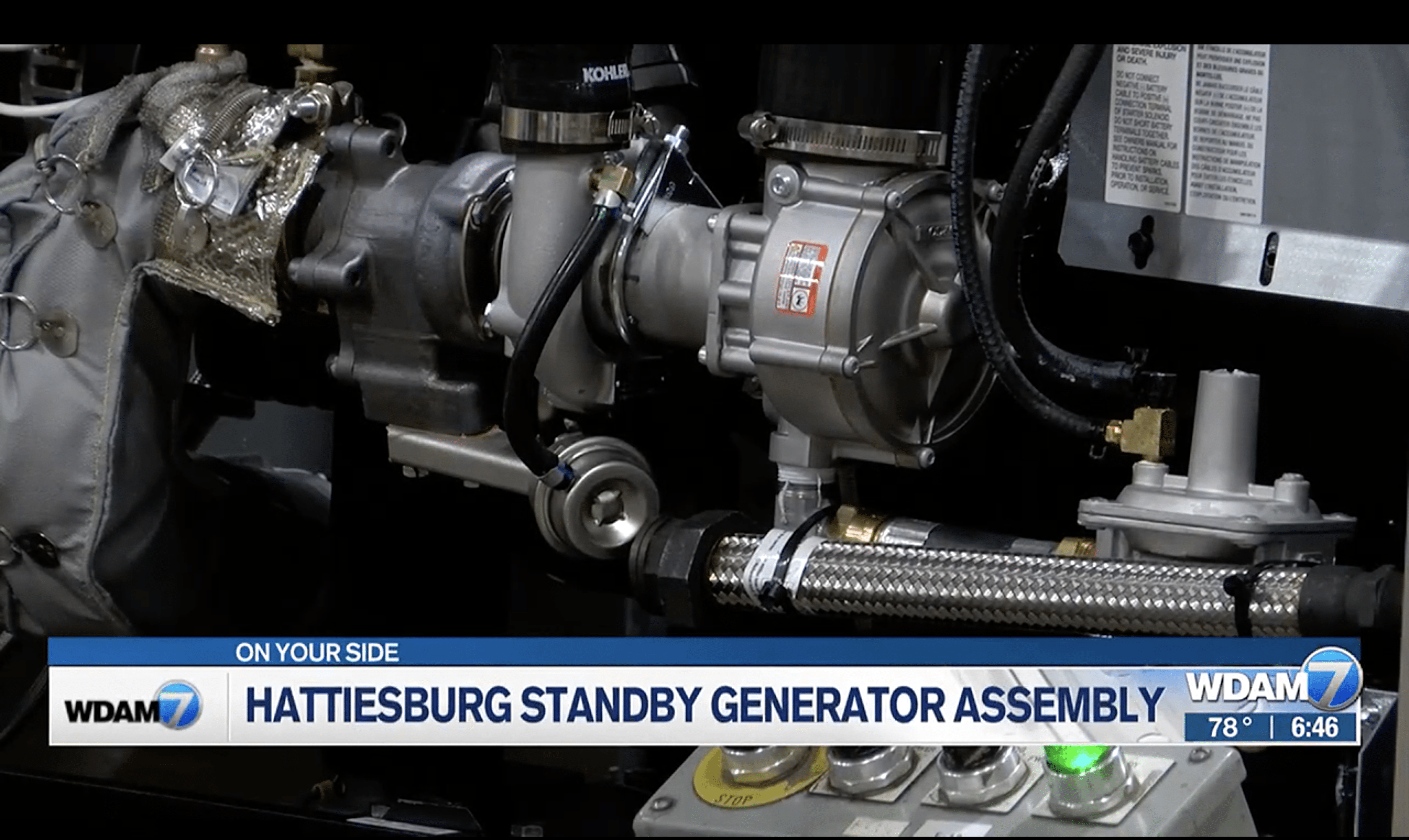Originally posted on www.wdam.com
PINE BELT, Miss. (WDAM) – Standby generators are a common way to make sure your home stays ahead of the storm, and some of those household and small business generators are built right here in the Pine Belt.
Kohler’s Hattiesburg assembly plant produces both air and water-cooled generators. These units are designed to run on either propane or natural gas.
There are other types of generators that run on gasoline or diesel, but those are not manufactured in the Pine Belt. As Kohler representative Melanie Tydrich tells us, the clean-burning propane and natural gas fuels each bring their own sets of considerations.
“Most people make the decision of natural gas versus propane based on whether you have natural gas lines coming into your home. If you do, you can set up with natural gas. If you don’t, then you use propane with an existing source or a tank to put outside your home or to bury”, Tydrich said.
Bret Shattles is a quality manager who monitors the assembly facilities both in Hattiesburg and Kohler’s plant in Wisconsin. He says that roughly two-thirds of what the Hattiesburg plant manufactures is 14 to 26-kilowatt output units, with larger options as high as 60 kilowatts.
“We make 10-kilowatt generators all the way up to 60-kilowatt generators. There’s three total assembly lines that produce right at 250 units a day. Usually, we run about 5 days a week, sometimes six days a week. The generators that we make in Hattiesburg are made to run on natural gas and propane. The other diesel generators aren’t made in this facility, but we offer those as well”, Shattles said.
Shattles adds that the diesel units are manufactured elsewhere, and are typically destined for buildings with large power demands such as data centers.
There are four main stages in the Hattiesburg plant’s assembly process. The generators start off with only alternators and engine components before wiring and technical systems are installed.
Once the two initial stages are complete, the generators are filled with oil. This is so they can be test run and checked before the final stages in the assembly take place.
Panels and exterior pieces of the generator are installed onto the unit, and the finishing touches are applied. With the generator fully assembled, the units are ready to ship away from the facility.
Copyright 2024 WDAM. All rights reserved.







